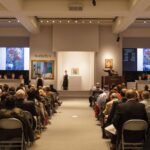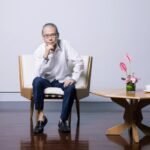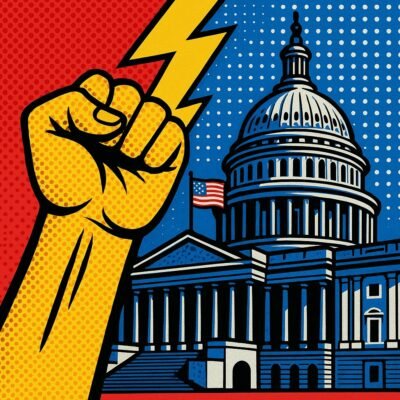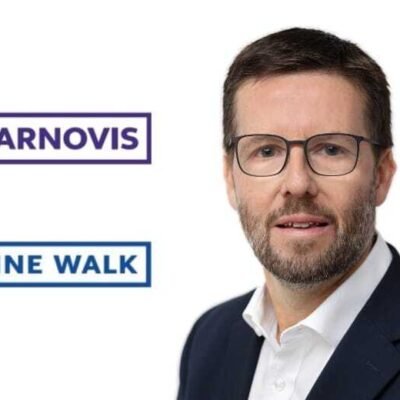What makes art collectors leave London for a Scottish castle?
Moving an art programme from a private museum in London to a remote 15th-century Scottish castle is a new sort of levelling up. But it is one reason that contemporary art collector David Roberts gives for his decision to close his gallery in Camden, north London, five years ago and move to Cortachy Castle, north of Dundee, from where he now offers artist residencies, events and UK-wide collaborations.
“London has a wealth of artistic opportunities,” the 65-year old says over a pre-dinner drink in Cortachy’s lofty drawing room. “It seemed a better idea to think about the regions that don’t benefit as much.”
As part of the rethink, his wife, the artist Indrė Šerpytytė-Roberts, has joined him centre stage. The David Roberts Art Foundation, which has supported and shown more than 1,000 artists since 2007, including Victor Man and Marvin Gaye Chetwynd, was last year renamed the Roberts Institute of Art. Institutions that have borrowed its curators and dipped into the couple’s collection of thousands of contemporary artworks include Sheffield’s Millennium Gallery and Mostyn art gallery in Wales. Several of their works by artists such as Yayoi Kusama, Danh Vō and Liliane Lijn are in the Flesh Arranges Itself Differently exhibition at Glasgow’s Hunterian Art Gallery (until May 22).

Key to the couple’s plans is the offer of two artist studios and residencies in the sweeping grounds of Cortachy, the former home of the Earl of Airlie. Roberts took on the estate on the recommendation of the art dealer Iwan Wirth, who has branched out into Scotland with the Fife Arms hotel in Braemar. At Cortachy, the renovation of two previously derelict outbuildings is nearly complete and the ceramicist Jesse Wine is due to start a residency in May. Later in the summer, the Polish sculptor Monika Sosnowska will take the second spot. Roberts and Šerpytytė emphasise the flexibility of their residencies, in part because of her experience as an artist.
“There are no parameters. It’s about using this great landscape and quiet place to push their practice in whatever way they want,” she says. There isn’t even the familiar stipulation to make a work, although Roberts says, “We would like some sort of record, but they could write something, for example.”
Šerpytytė confesses that the brooding Cortachy didn’t win her love at first sight. It is certainly different from where she grew up, in Lithuania and Cornwall, and studied, in London and Brighton. “I love it now,” she says, and both note how much their young child — her first, his seventh — is attached to the place, where they all happily hunkered down for much of the pandemic.

For Roberts, Cortachy Castle is much closer to home, but still feels a long way from where he grew up, in Greenock, near Glasgow. “Everyone who left school went to work on the shipyards,” he says. He was bright, with an early interest in graphic design and so, he says, “my mother pushed me to be a naval architect.” He gradually moved into commercial property, where he made his money, but still manages to keep relatively modest surrounds. Cortachy, while still a castle, is not replete with mod cons. The WiFi is patchy, to say the least, and, in mid-February, the most consistent heat came from an open fireplace in the drawing room.
The art displayed in the castle is not an obvious selection of mega-gallery hits. There are quite a lot of Nicolas Party’s sculptures and paintings, but also a painting by the less-hyped Donna Huanca and a large photograph by the London-based Jo Broughton. The castle’s new owners have kept some of its ancestral paintings, plus plenty of discarded crockery and glassware, and show them to great effect.
Both Roberts and his art on view seem less gloomy than they have been characterised in the past: his “fascination with death” was recorded in a Financial Times interview 10 years ago. Roberts and Šerpytytė say it isn’t a case of changing each other’s art habits. “We have very similar taste. Indrė has made me a bit less impulsive. When something blows me away, I would rather she saw it first,” he says. One other advantage of the partnership: Roberts was an early buyer of the now-hot young artist Flora Yukhnovich — “She had the same gallery [Parafin] as Indrė,” he says. (Yukhnovich now shows with Victoria Miro gallery.)

Roberts met Šerpytytė at her Royal College of Art show, where he bought the whole series of her work. “He tried to get a discount; I said no way!” she says. The nine photographs are part of a powerful project that charts homes that were covertly used by the KGB as control centres. The photographs now hang proudly outside Cortachy’s downstairs bathroom. She understandably speaks very little about the unresolved death of her father, a Lithuanian government official, when she was only 18, but she says these works are unrelated.
They are still buying art, though Roberts says that “lockdown slowed things down a bit.” The Institute champions performance art, something he has learnt “needs help other than owning”. A postponed show of new commissions by six artists is finally due to happen at Studio Spaces in Wapping, east London, on March 30 and the programme will tour to Scotland, through a collaboration with Edinburgh’s Fruitmarket gallery.
Roberts is a little jaded by some aspects of the art market — its internationalisation, its internet-isation — which have changed so much since he began collecting in the early 1990s. “It’s not their fault, but some galleries are on an endless treadmill, with an enormous number of collectors and artists to service. You can decide to go with it, or not,” he says — sitting firmly in the second camp.

He confesses that coming off the treadmill means he “will often open an auction catalogue that arrives and there’s an artist that I’ve never heard of estimated to make between $1mn and $2mn!” But he mostly takes this as a welcome challenge to keep learning. “It’s exciting. Art moves so fast as a subject, you can never know everything.”







No Comment! Be the first one.